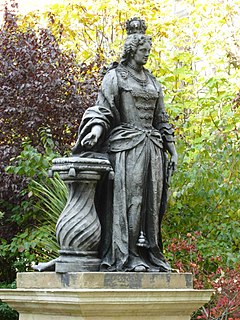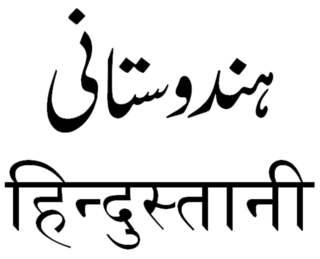Life
Hadley was appointed a cadet in the East India Company's service in 1763, and gained his first commission in the Bengal Presidency on 19 June of that year. He became lieutenant on 5 February 1764, and captain on 26 July 1760. [1]

The Bengal Presidency (1757–1912), later reorganized as the Bengal Province (1912–1947), was once the largest subdivision (presidency) of British India following the dissolution of the Mughal Bengal, with its seat in Calcutta. It was primarily centred in the Bengal region. At its territorial peak in the 19th century, the presidency extended from the present-day Khyber Pakhtunkhwa province of Pakistan in the west to Burma, Singapore and Penang in the east. The Governor of Bengal was concurrently the Viceroy of India for many years. Most of the presidency's territories were eventually incorporated into other British Indian provinces and crown colonies. In 1905, Bengal proper was partitioned, with Eastern Bengal and Assam headquartered in Dacca and Shillong. British India was reorganised in 1912 and the presidency was reunited into a single Bengali-speaking province.
Hadley retired from the service on 4 December 1771. [1] He returned to England, though it is not known exactly when. [2] He was of assistance to the self-taught orientalist William Price, whom he introduced to William Ouseley. [3]
William Price (1780–1830) was an English orientalist.

Sir William Ouseley HFRSE FSAScot, was a British orientalist.
Hadley died on 10 September 1798 in Gloucester Street, Queen Square, London. [1]

Queen Square is a garden square in the Bloomsbury district of central London. Many of its buildings are associated with medicine, particularly neurology.
Works
As an army commander, Hadley was in charge of a company of sepoys, but initially had no knowledge of their language, Hindustani, which was then colloquially known in English as "Moors". For his own use, Hadley wrote a grammar of it, in 1765. A copy of his manuscript was published in London in 1770. Hadley then worked on a corrected edition, which appeared as Grammatical Remarks (1772). [4] He published also Introductory Grammatical Remarks on the Persian Language. With a Vocabulary, English and Persian, Bath, 1776. [1]

A sepoy was originally the designation given to an Indian infantryman armed with a musket in the armies of the Mughal empire.
Hadley's grammar was aimed at the current British needs in Bengal, to get Indians to work for them, without the mediation of a munshi . Its content, as a phrase book, reflected the economy and social climate of the time, and ignored the Urdu language. [5] Hadley correctly identified Hindustani as a language in its own right, rather than a dialect of Persian. His theory of a Tartar origin was rejected, and his work came in for criticism from John Borthwick Gilchrist, who objected to the version of Hindustani it reported. [2]

Munshi is a Persian word, originally used for a contractor, writer, or secretary, and later used in the Mughal Empire and British India for native language teachers, teachers of various subjects especially administrative principles, religious texts, science, and philosophy and were also secretaries and translators employed by Europeans.
The Tatar language is a Turkic language spoken by Tatars mainly located in modern Tatarstan, as well as Siberia. It should not be confused with the Crimean or Siberian Tatar which are closely related but belong to different subgroups of the Kipchak languages.
In 1788 Thomas Briggs, a printer in Hull, persuaded Hadley to put his name to a compilation, A New and Complete History of the Town and County of the Town of Kingston-upon-Hull. [1]

Hindi or Modern Standard Hindi, is a standardised and Sanskritised register of the Hindustani language. In India, the official standardized variety of the language is based primarily on the Khariboli dialect of Delhi and other nearby areas of northern India. Hindi, written in the Devanagari script, is one of the two official languages of the Government of India, along with the English language. It is one of the 22 scheduled languages of the Republic of India. Contrary to the popular belief, Hindi is not the national language of India because no language was given such a status in the Indian constitution.

Urdu —or, more precisely, Modern Standard Urdu—is a Persianised standard register of the Hindustani language. It is the official national language and lingua franca of Pakistan. In India, it is one of the 22 official languages recognized in the Constitution of India, having official status in the six states of Jammu and Kashmir, Telangana, Uttar Pradesh, Bihar, Jharkhand and West Bengal, as well as the national capital territory of Delhi.
Edward Backhouse Eastwick CB was an English orientalist, diplomat and Conservative Member of Parliament. He wrote and edited a number of books on South Asian countries. These included a Sindhi vocabulary and a grammar of the Hindustani language.

John Shore, 1st Baron Teignmouth was a British official of the East India Company who served as Governor-General of Bengal from 1793 to 1797. In 1798 he was created Baron Teignmouth in the Peerage of Ireland.

John Borthwick Gilchrist was a Scottish surgeon, linguist, philologist and Indologist. Born and educated in Edinburgh, he spent most of his early career in India, where he made a study of the local languages. In later life, he returned to Britain and lived in Edinburgh and London. In his final years, he moved to Paris, where he died at the age of 81.
George Lyall was an English merchant and politician, Chairman of the Honourable East India Company for periods 1841–3 and 1844–6.
Henry George Raverty was an officer and linguist in the British Indian Army.
Rowland Jones (1722–1774) was a Welsh lawyer and philologist of radical linguistic views.
Matthew Lumsden (1777–1835) was a Scottish orientalist. He was educated at King's College, Aberdeen, Scotland, and held a professorship of Persian and Arabic at the College of Fort William, India.
Hindustani vocabulary, also known as Hindi-Urdu vocabulary, like all Indo-Aryan languages, has a core base of Sanskrit, which it gained through Prakrit. As such the standardized registers of the Hindustani language (Hindi-Urdu) share a common vocabulary, especially on the colloquial level. However, in formal speech, Hindi tends to draw on Sanskrit, while Urdu turns to Persian and sometimes Arabic. This difference lies in the history of Hindustani, in which the Khariboli dialect started to gain more Persian words in urban areas, under the Delhi Sultanate; this dialect came to be termed Urdu.
Charles Stewart (1764–1837), was a British orientalist. He served in the Bengal Army from 1781 until 1808. He was assistant-professor of Persian at Fort William College, Calcutta from 1800 until 1806. From 1807 until 1827 he was professor of Arabic, Persian, and Hindustani at East India College, Haileybury. He edited and translated oriental works.
Henry George Keene (1781–1864) was an English employee of the East India Company, as soldier, civil servant, and orientalist. He was known as a Persian scholar, and also was a churchman and academic.
George North (1707–1772) was an English cleric and numismatist.
George Lipscomb (1773–1846) was an English physician and antiquarian, known particularly for his county history of Buckinghamshire.
Victorinus Bythner (c.1605–c.1670) was a Polish Hebraist, grammarian and university teacher in England.

Mīrzā Muḥammad I'tiṣām al-Dīn Pãchnūrī,, or was a Mughal diplomat and the first educated Indian and Bengali to travel to Europe, in 1765. He was also a munshi serving the Nawabs of Bengal as well as the East India Company. He had also written the text of the 1765 Treaty of Allahabad.
John Shakespear was an orientalist and professor of Hindustani.
Thomas Roebuck (1781–1819) was a Scottish army officer of the East India Company, known as an orientalist and lexicographer.

William Kirkpatrick (1754–1812) was a British army officer and diplomat in India, known also as an orientalist.












